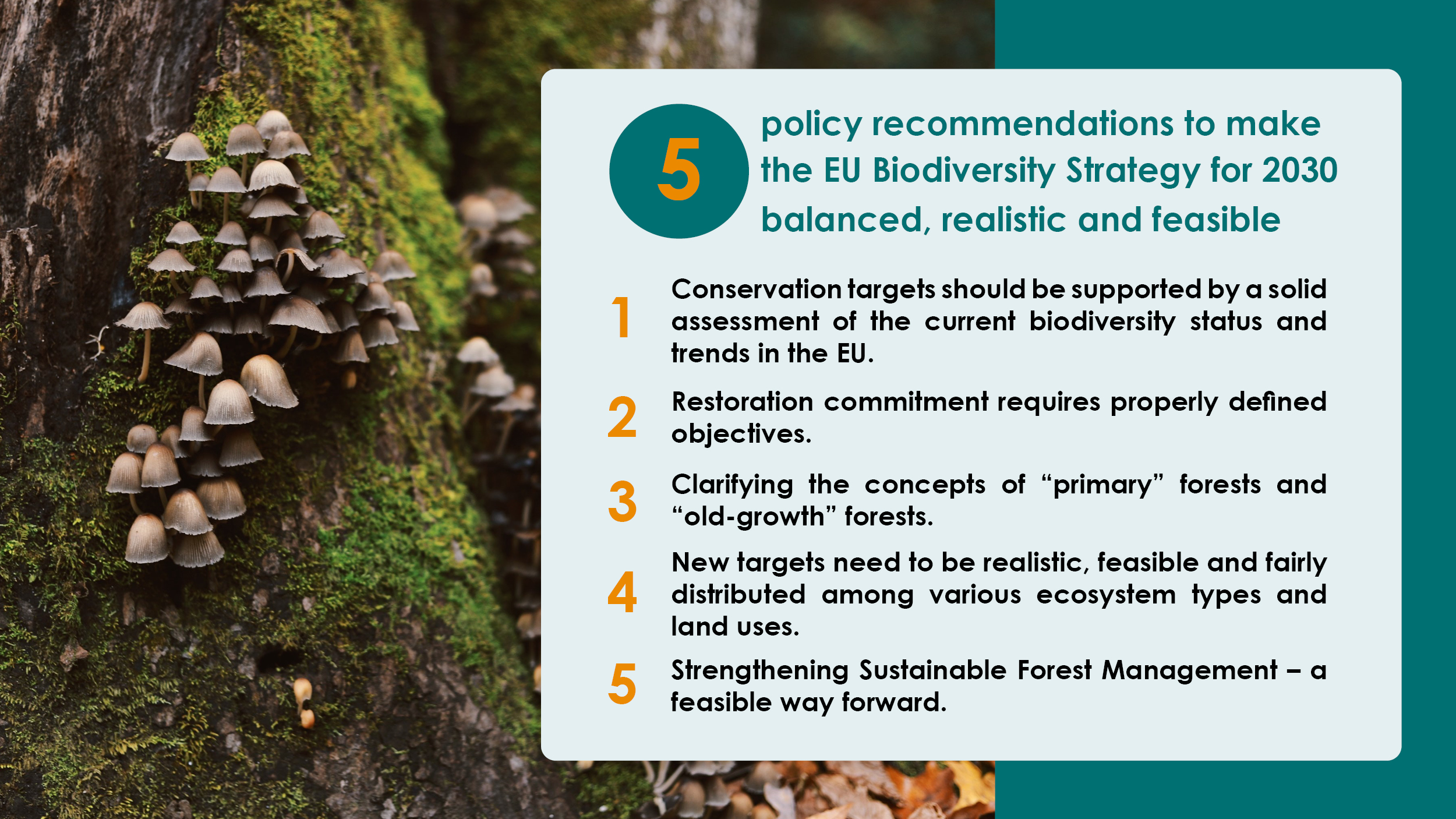The EU Biodiversity Strategy for 2030 must be balanced, realistic and feasible

The EU Biodiversity Strategy for 2030 “Bringing nature back into our lives” has been published today by the European Commission (EC). EUSTAFOR generally welcomes the EC’s efforts to develop this new Strategy as one of the paths towards the EU Green Deal and the Global Biodiversity Framework. However, to fulfill its purpose, the Strategy needs to build upon sound scientific knowledge and verifiable facts. Its objectives and targets should be ambitious, but realistic and feasible.
“Sustainable management of state forests fulfills multiple objectives and provides various products and services to the public. Although there are synergies between biodiversity conservation and other services provided by forests, the existing trade-offs between various functions and services must be acknowledged,” said Piotr Borkowski, Executive Director of EUSTAFOR.
The EU Biodiversity Strategy aims to halt the loss of biodiversity and ecosystem services in the EU and to help stop global biodiversity loss, reflecting the commitments taken by the EU within the international Convention on Biological Diversity (CBD)(1). EUSTAFOR strongly believes that the effective way to safeguard biodiversity is through cooperation and joint efforts, both at global and European levels, and a well-designed EU Strategy could play a major role in upscaling good European experiences. To reach their purpose, the EU conservation targets should be anchored in the European Union’s reality, be reliable and achievable, thus not overburdening forest managers.
To contribute to a future-fit EU Biodiversity Strategy, EUSTAFOR highlighted, in its latest position paper, 5 policy recommendations. These take into account the potential consequences of the Strategy on sustainable forest management alongside the multiple objectives and emerging demands on EU state forests.
- Conservation targets should be supported by a solid assessment of the current biodiversity status and trends in the EU. Data reported by the Member States must be verified and thoroughly cross-checked with relevant actors at national level, including national ministries, forest owners and managers.
- Restoration commitment requires properly defined objectives. From a forest manager’s perspective, the restoration objectives, especially those in old-growth forests and primary forests, must be precise and based on sound scientific knowledge.
- The concepts of “primary” forests and “old-growth” forests need to be clarified. While primary forests are well-identified, the definition of old-growth forests should first be agreed by the Commission and Member States before seeking appropriate strategies to map and manage these areas.
- New targets need to be realistic, feasible and fairly distributed among various ecosystem types and land uses. The proposed targets to increase the protected areas to at least 30% of terrestrial ecosystems and place 1/3 of those areas under even further strict protection creates a significant risk of missing its purpose, since the key driver might not be the conservation status of species and habitats but the ability of land managers to bear the burden of implementation.
- Strengthening Sustainable Forest Management (SFM) is a feasible way forward. Natural ecosystem processes are fully acknowledged by the SFM concept that has been embedded in national forest legislation for decades. With these strict sustainability rules, biodiversity is ensured by daily SFM practices in state forests.
EUSTAFOR acknowledges the Commission’s efforts to promote afforestation and woodland creation across the EU and to further develop the Forest Information System for Europe. The system, however, should build upon sound data from forest inventories and should be developed with the active participation of the Member States within the framework of the new EU Forest Strategy post-2020.
When establishing further forestry-related objectives, EUSTAFOR strongly believes that an active role should be taken by Member States, in line with the subsidiarity principle, while ensuring the participation of forest owners and managers, as well as all other relevant actors.
(1) https://ec.europa.eu/environment/nature/biodiversity/strategy/index_en.htm
Published 20/05/2020
Ms. Amila Meškin
Senior Policy Advisor
- amila.meskin@eustafor.eu
- +32 (0) 472 044 759
Diem Tran
Communications Officer
- +32 (0) 2 239 23 00

